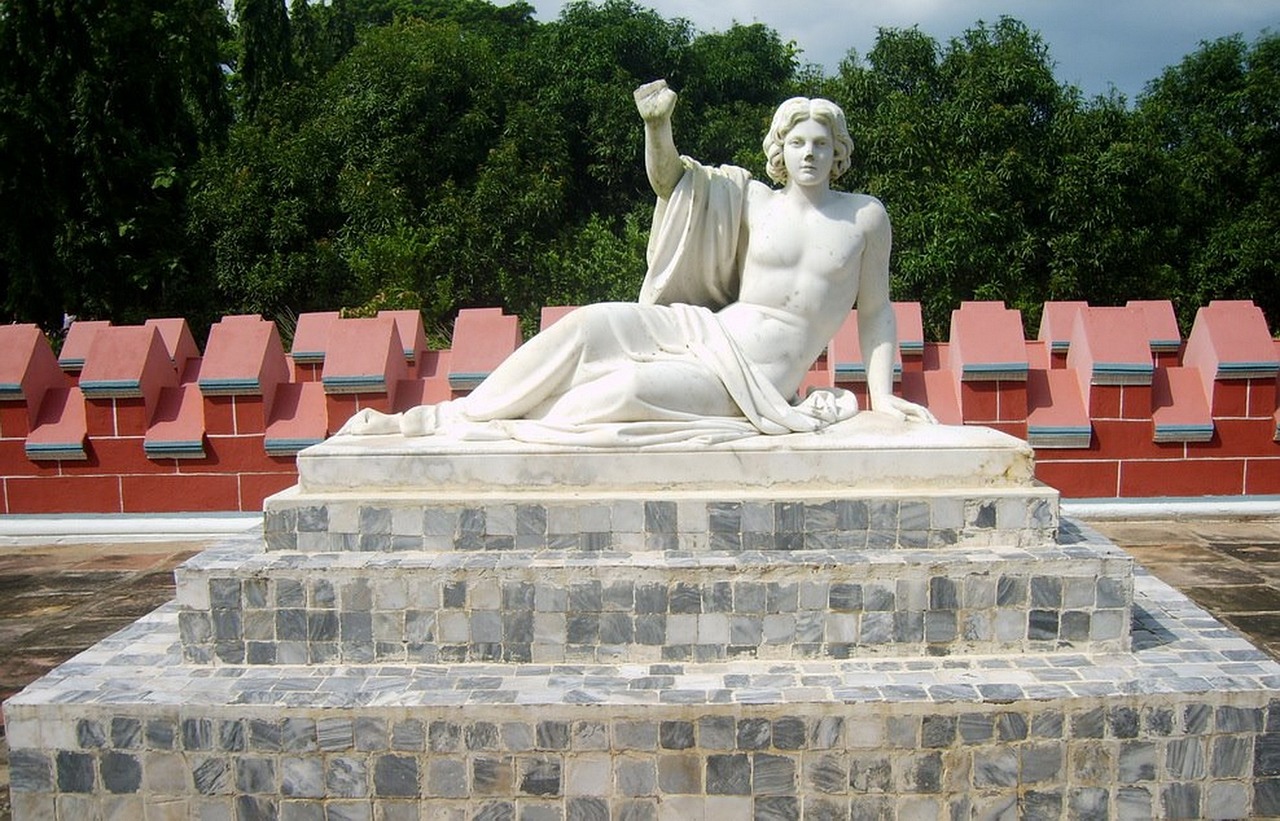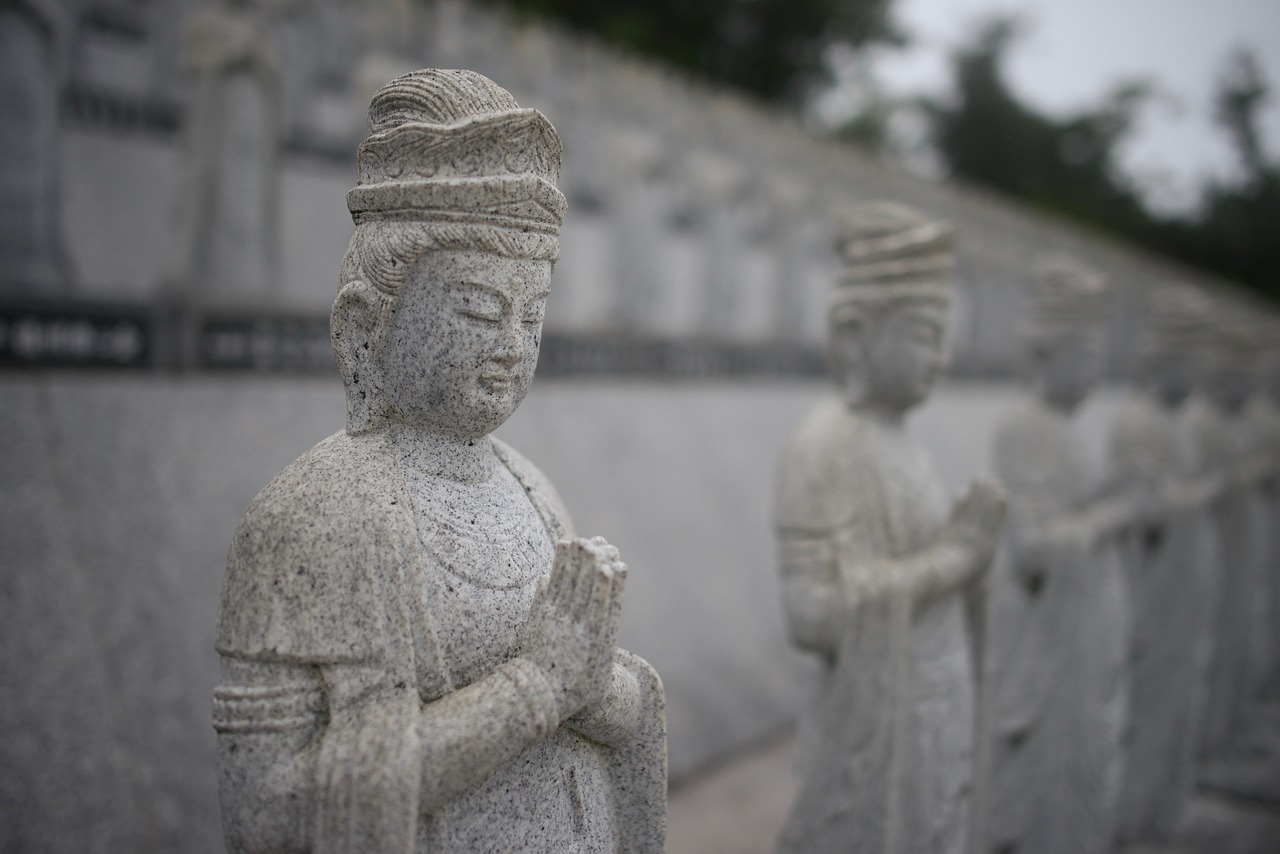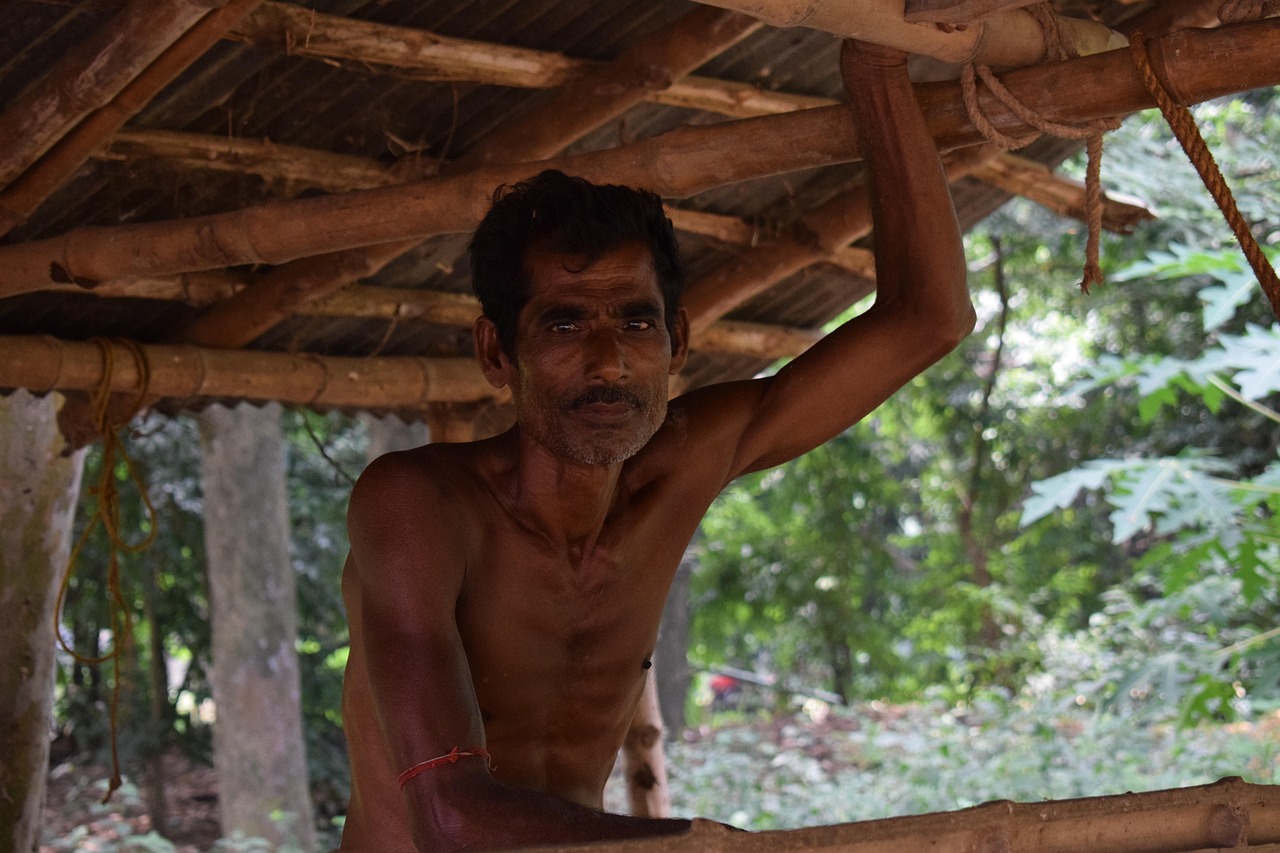This article provides a comprehensive travel guide to Darjeeling, highlighting its attractions, culture, and practical tips for visitors to enjoy this picturesque hill station.
Introduction to Darjeeling
Darjeeling, nestled in the foothills of the Himalayas, is renowned for its stunning landscapes, lush tea gardens, and vibrant cultural heritage. Once a summer retreat for British officials, this charming hill station has evolved into a popular tourist destination, attracting visitors with its breathtaking views of the Kanchenjunga mountain range and its rich history.
Best Time to Visit Darjeeling
Understanding the ideal seasons to visit Darjeeling can significantly enhance your experience. The climate varies throughout the year, making some months more suitable for sightseeing and outdoor activities than others.
- Summer in Darjeeling: From March to June, the weather is pleasant, making it the peak tourist season. This is the perfect time for exploring the region’s attractions and engaging in outdoor adventures.
- Monsoon Season: From July to September, heavy rainfall transforms the landscape into a lush paradise, but it may also hinder travel plans due to landslides.
- Winter Wonderland: December to February brings chilly weather and occasional snowfall, offering a unique charm and winter activities for visitors.
Top Attractions in Darjeeling
Darjeeling boasts a variety of attractions catering to different interests:
- Darjeeling Himalayan Railway: A UNESCO World Heritage Site, this scenic toy train ride is a must-experience for visitors.
- Tea Gardens: The world-famous tea gardens of Darjeeling produce high-quality tea, and tours provide insights into the cultivation process.
- Mount Kanchenjunga: As the third-highest peak in the world, it offers stunning views and trekking opportunities for adventure enthusiasts.
Cultural Experiences in Darjeeling
The rich cultural tapestry of Darjeeling is influenced by various communities, offering visitors a chance to immerse themselves in local traditions:
- Local Cuisine: Experience the diverse culinary scene, featuring Tibetan, Nepali, and Bengali influences.
- Festivals and Celebrations: Participate in vibrant local festivals that reflect the region’s rich culture.
Practical Tips for Travelers
To ensure a smooth visit to Darjeeling, consider the following practical tips:
- Getting to Darjeeling: Various transportation modes are available, including trains and taxis from nearby cities.
- Accommodation Options: From luxury hotels to budget guesthouses, Darjeeling offers a range of places to stay.
Conclusion: Embrace the Beauty of Darjeeling
Darjeeling is a captivating destination that offers a blend of natural beauty, cultural richness, and adventure. Whether you are exploring its tea gardens, enjoying the scenic train rides, or participating in local festivals, the magic of this hill station is sure to leave a lasting impression.
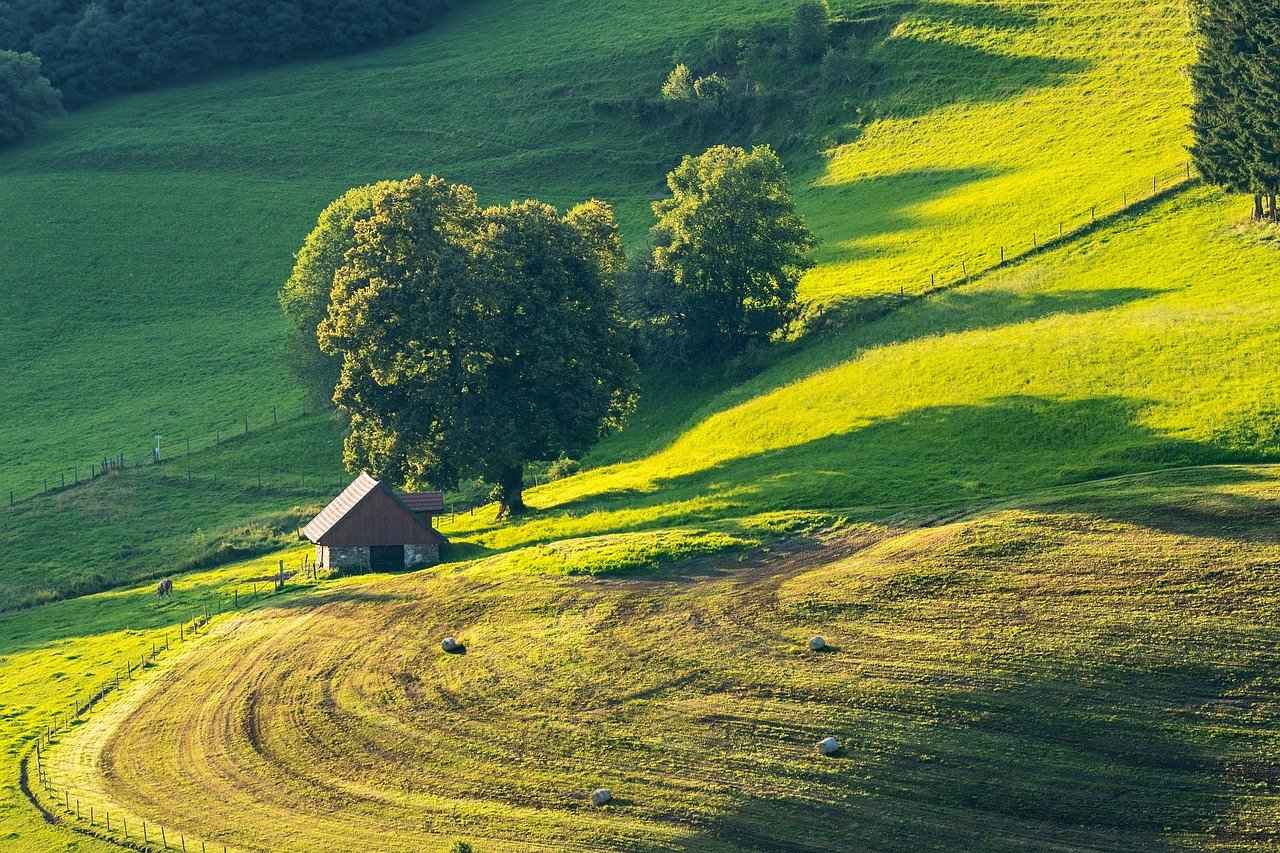
Introduction to Darjeeling
Darjeeling, often referred to as the Queen of Hills, is a mesmerizing hill station nestled in the northern part of West Bengal, India. Renowned for its stunning landscapes, this charming town is not only a feast for the eyes but also a treasure trove of cultural heritage and history. With its scenic vistas, sprawling tea gardens, and a unique blend of cultures, Darjeeling has become a coveted destination for tourists from all over the globe.
Historically, Darjeeling was a small village until the British colonial era, when it transformed into a popular summer retreat for British officials seeking respite from the heat of the plains. The establishment of the Darjeeling Himalayan Railway in 1881 further solidified its status as a prominent hill station. Today, this UNESCO World Heritage Site attracts visitors with its charming toy train rides that offer stunning views of the surrounding mountains.
The town is also famous for its lush tea gardens, which produce some of the finest teas in the world. Visitors can explore these plantations, learn about the tea-making process, and savor the rich flavors of Darjeeling tea. The cultural diversity of the region is reflected in its festivals, cuisine, and traditions, making it a vibrant hub of activity.
- Scenic Beauty: The breathtaking views of the Himalayas, especially the majestic Mount Kanchenjunga, provide a perfect backdrop for photography and nature walks.
- Cultural Richness: The blend of Tibetan, Nepali, and Indian cultures enriches the local experience, from festivals to culinary delights.
- Adventure Opportunities: Darjeeling offers various trekking routes and outdoor activities for adventure enthusiasts.
As a popular tourist destination, Darjeeling continues to enchant visitors with its natural beauty and cultural depth. Whether you are seeking tranquility or adventure, this hill station promises an unforgettable experience.
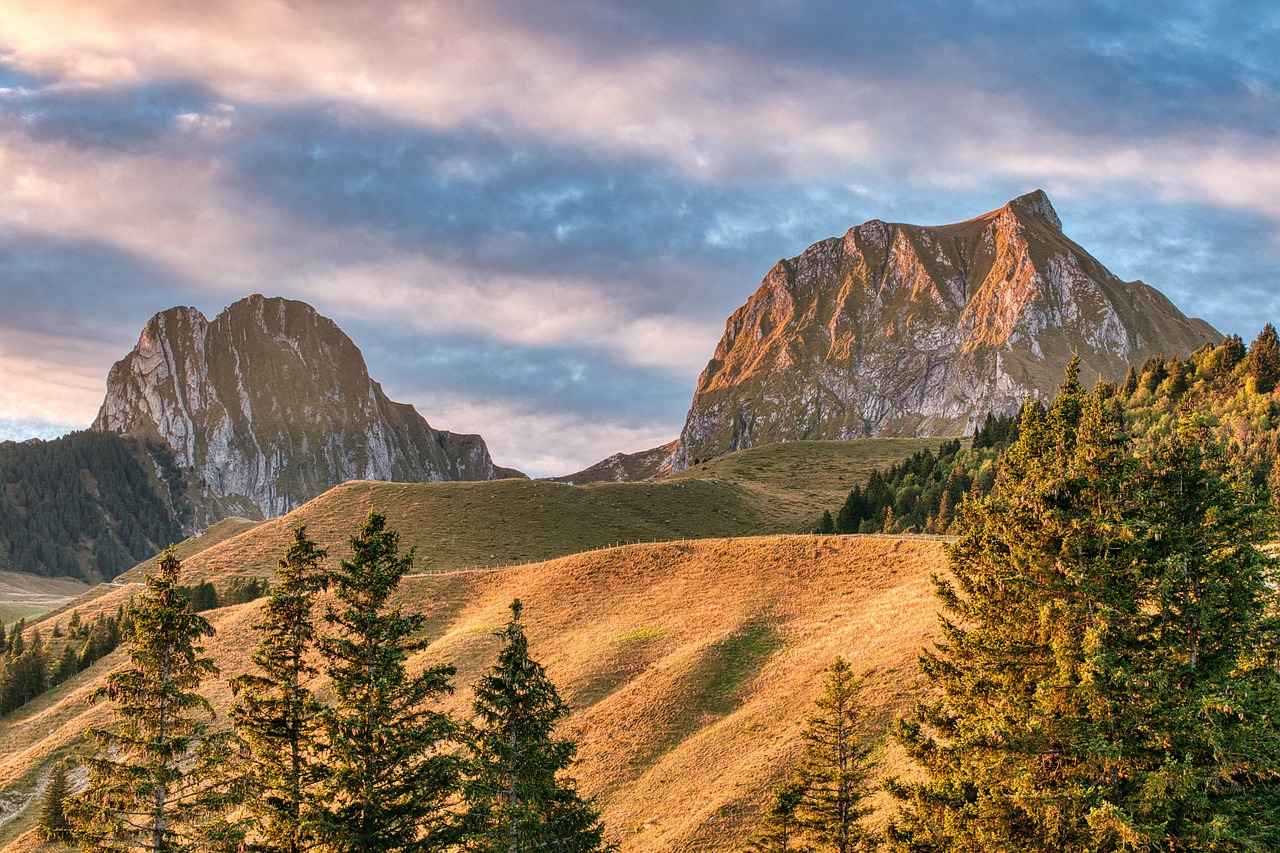
Best Time to Visit Darjeeling
Understanding the ideal seasons to visit Darjeeling significantly enhances your travel experience. This beautiful hill station, nestled in the Himalayas, offers a unique charm throughout the year, but the climate varies greatly between seasons. Knowing when to visit can help you make the most of your trip, whether you’re interested in sightseeing, outdoor activities, or simply soaking in the breathtaking scenery.
Summer Season (March to June)
Summer is considered the peak tourist season in Darjeeling. With temperatures ranging from 15°C to 25°C, this period is characterized by pleasant weather, making it ideal for exploring the region’s stunning landscapes and attractions. Visitors can enjoy activities such as trekking, visiting tea gardens, and taking scenic rides on the Darjeeling Himalayan Railway. The clear skies offer spectacular views of Mount Kanchenjunga, the third-highest peak in the world.
Monsoon Season (July to September)
Monsoon season brings heavy rainfall to the region, transforming Darjeeling into a lush green paradise. However, with rainfall comes the risk of landslides and roadblocks, which can hinder travel plans. While the scenery is incredibly beautiful, it is advisable to check weather conditions before planning a visit during these months. If you do decide to travel during the monsoon, be prepared for occasional disruptions but also enjoy the serenity that the rain brings to the hills.
Winter Season (December to February)
Winter in Darjeeling offers a different kind of beauty. The temperatures can drop to 2°C to 10°C, and occasional snowfall blankets the landscape in white. This season is perfect for visitors seeking a tranquil atmosphere and opportunities for winter sports. The chilly weather creates a cozy ambiance, ideal for enjoying a hot cup of Darjeeling tea while admiring the snow-capped mountains.
In conclusion, each season in Darjeeling presents its own unique allure. Whether you prefer the vibrant summer, the tranquil monsoon, or the serene winter, planning your visit according to the climate can greatly enhance your experience. Make sure to consider your interests and activities when choosing the best time to explore this enchanting destination.
Summer in Darjeeling
is a truly magical experience that captivates travelers from all over the world. From March to June, the region transforms into a vibrant paradise, attracting tourists with its pleasant weather and stunning landscapes. This peak tourist season allows visitors to explore the rich culture, beautiful scenery, and numerous outdoor activities that Darjeeling has to offer.
During these months, the temperature ranges between 10°C to 25°C, providing a comfortable climate for sightseeing and adventure. The clear skies reveal breathtaking views of the majestic Himalayas, including the renowned Mount Kanchenjunga, which stands tall as the third-highest peak in the world. The lush green hills and vibrant blooming flowers create a picturesque backdrop, making it perfect for photography enthusiasts.
Visitors can indulge in a variety of outdoor activities such as:
- Trekking: Numerous trails offer trekking opportunities for both beginners and experienced hikers.
- Tea Garden Tours: Explore the world-famous tea plantations and learn about tea production.
- Visit Local Markets: Experience the local culture by visiting bustling markets filled with handicrafts and local produce.
- Adventure Sports: Engage in paragliding or mountain biking for an adrenaline rush.
In addition to outdoor adventures, summer is also the time for various local festivals that showcase the rich cultural heritage of Darjeeling. Visitors can immerse themselves in traditional music, dance, and cuisine, providing a deeper understanding of the region’s vibrant community.
In conclusion, summer in Darjeeling not only offers favorable weather but also presents a unique opportunity to explore its natural beauty and cultural richness. Whether you are seeking adventure or relaxation, Darjeeling is sure to leave a lasting impression on every traveler.
Monsoon Season
Monsoon Season in Darjeeling
The in Darjeeling, spanning from July to September, transforms the landscape into a vibrant tapestry of lush greenery. While this season is celebrated for its refreshing rains and the rejuvenation of nature, it also presents certain challenges for travelers.
During the monsoon, Darjeeling experiences heavy rainfall, which can lead to stunning views of mist-covered hills and blooming flora. However, this beauty comes with its own set of difficulties. The rains can cause landslides and roadblocks, making travel unpredictable. Visitors planning to explore the region should be prepared for potential delays and should always check weather updates before embarking on their journeys.
Despite the challenges, the monsoon season offers unique experiences that are worth considering. The tea gardens come alive, showcasing their lush green leaves, and the air is filled with the earthy scent of wet soil. For those who enjoy photography, this season provides an opportunity to capture the enchanting beauty of Darjeeling in its most vibrant form.
Travelers should also be aware that certain attractions may have restricted access due to weather conditions. It is advisable to plan indoor activities or visit local museums and cultural sites that are less affected by the rain.
In conclusion, while the monsoon season in Darjeeling brings challenges such as landslides and travel disruptions, it also offers a chance to witness the region’s stunning natural beauty. With proper planning and flexibility, visitors can still enjoy a memorable experience in this captivating hill station.
Winter Wonderland
Winter in Darjeeling, spanning from December to February, transforms this picturesque hill station into a magical wonderland. The chilly weather, coupled with the occasional snowfall, creates a serene atmosphere that enchants both locals and visitors alike. This season offers a unique opportunity to experience the beauty of Darjeeling in a way that is distinctly different from other times of the year.
During these months, the temperature can drop significantly, often ranging between 2°C to 10°C. Visitors are advised to dress warmly, with layers of clothing, to fully enjoy the outdoor experiences. One of the most captivating aspects of winter in Darjeeling is the breathtaking views of the snow-capped Himalayas, especially the majestic Mount Kanchenjunga, which stands tall against the clear blue skies.
Winter activities in Darjeeling are abundant. Tourists can indulge in snow trekking, where guided tours take you through the snowy trails, offering a chance to witness nature’s beauty up close. For those who prefer a more relaxed experience, sipping on a hot cup of Darjeeling tea while enjoying the scenic views from a cozy café is highly recommended.
Moreover, the Darjeeling Himalayan Railway remains operational during winter, providing a charming ride through the snow-laden landscapes. This UNESCO World Heritage Site is not just a means of transportation but an experience that captures the essence of the region’s heritage.
In addition to outdoor activities, winter is also a time for local festivals. The vibrant celebrations often include cultural performances and traditional foods, allowing visitors to immerse themselves in the local culture. The warmth of the community contrasts beautifully with the cold weather, making for an unforgettable experience.
In conclusion, winter in Darjeeling is a season filled with charm and adventure. From stunning landscapes to engaging activities, it offers a unique perspective on this beloved hill station. Whether you are an adventure seeker or someone looking to relax amidst nature, Darjeeling in winter is a destination that promises to captivate your heart.
Top Attractions in Darjeeling
Darjeeling, often referred to as the Queen of Hills, is a treasure trove of attractions that cater to a wide range of interests. This picturesque hill station is not only famous for its breathtaking landscapes but also for its rich cultural heritage. Below are some of the must-visit attractions that showcase the essence of Darjeeling.
- Darjeeling Himalayan Railway
This UNESCO World Heritage Site is renowned for its charming toy train rides. The railway offers a unique experience as it winds through stunning landscapes, tea gardens, and quaint villages, making it a nostalgic journey through time.
- Tea Gardens
Darjeeling’s tea gardens are world-famous for producing high-quality tea. Visitors can explore these lush plantations, learn about the tea-making process, and even enjoy a cup of freshly brewed Darjeeling tea while soaking in the serene views.
- Mount Kanchenjunga
As the third-highest peak in the world, Mount Kanchenjunga is a major attraction for trekkers and nature lovers. The breathtaking views from various vantage points, along with trekking routes, offer an adventurous experience for outdoor enthusiasts.
- Buddhist Monasteries
Darjeeling is home to several beautiful monasteries, such as the Ghoom Monastery and the Bhutia Busty Monastery. These serene places of worship provide insight into the local Buddhist culture and are perfect for those seeking tranquility.
- Peace Pagoda
Located on the hilltop, the Peace Pagoda is a stunning structure that symbolizes peace and harmony. Visitors can enjoy panoramic views of the surrounding mountains while reflecting on the teachings of Buddha.
In conclusion, Darjeeling offers a diverse range of attractions that cater to every visitor’s interests. From natural wonders to cultural experiences, this hill station is a perfect getaway for those looking to embrace the beauty and charm of the Himalayas.
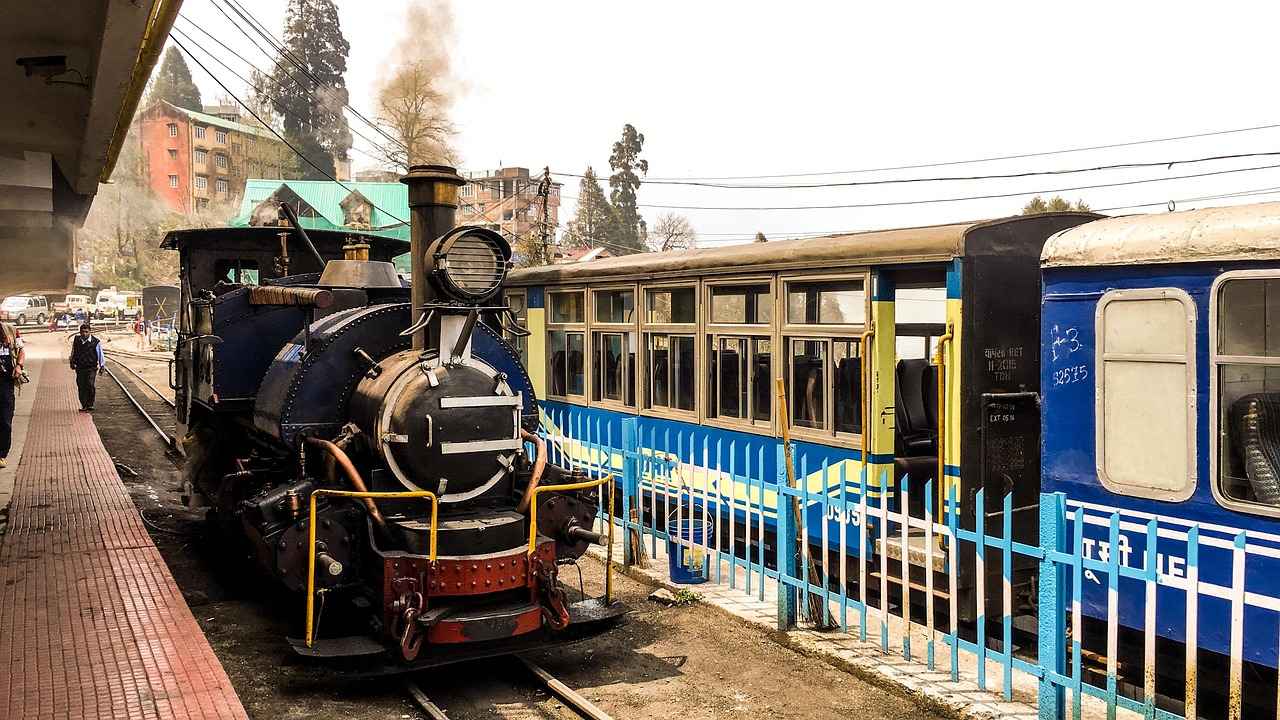
Darjeeling Himalayan Railway
The Darjeeling Himalayan Railway, often referred to as the Toy Train, is a remarkable feat of engineering and a significant cultural icon in India. This narrow-gauge railway, which stretches approximately 88 kilometers from New Jalpaiguri to Darjeeling, is recognized as a UNESCO World Heritage Site for its historical and architectural significance.
Constructed in the late 19th century, the railway was completed in 1881 and has since become a vital part of the region’s identity. It was built to facilitate the transportation of tea from the lush gardens of Darjeeling to the markets and is now a popular tourist attraction.
The journey aboard the Toy Train is nothing short of enchanting. Passengers are treated to stunning views of the Himalayan foothills, verdant tea estates, and charming villages along the route. The train’s slow pace allows travelers to fully immerse themselves in the breathtaking scenery, making it a favorite among both locals and tourists.
One of the most notable features of the Darjeeling Himalayan Railway is its unique zigzag and looping tracks, which help the train navigate the steep gradients of the region. This engineering marvel not only showcases the ingenuity of its creators but also adds to the thrill of the ride.
In addition to its scenic beauty, the railway has played a crucial role in the local economy. It has facilitated trade and tourism, contributing significantly to the livelihoods of the local population. The Toy Train experience is often complemented by visits to nearby attractions, such as the Tiger Hill and various tea estates, allowing visitors to explore the rich cultural heritage of Darjeeling.
As travelers embark on this unforgettable journey, they not only witness the stunning landscapes but also connect with the history and traditions of the region. The Darjeeling Himalayan Railway stands as a testament to the enduring spirit of exploration and adventure.
In conclusion, the Darjeeling Himalayan Railway is more than just a mode of transportation; it is a cherished symbol of the region’s history, culture, and natural beauty. A ride on this historic train is an essential experience for anyone visiting the Queen of Hills.
Tea Gardens of Darjeeling
Darjeeling, often referred to as the Queen of Hills, is not just famous for its breathtaking landscapes but also for its exquisite tea. The tea gardens of Darjeeling are celebrated worldwide for producing some of the finest teas, known for their unique flavor profiles and aromatic qualities. This section explores the intricate tea cultivation process and offers valuable insights for visitors interested in experiencing these lush plantations.
The tea cultivation process in Darjeeling is a meticulous art that involves several stages, each contributing to the quality of the final product. The journey begins with the careful selection of tea plants, primarily the Camellia sinensis variety. The altitude of Darjeeling, ranging from 600 to 2,000 meters, significantly influences the growth and flavor of the tea. The cooler climate and misty conditions create a unique environment that enhances the tea’s character.
- Planting and Pruning: Tea bushes are typically planted in rows to maximize sunlight exposure. Regular pruning is essential to promote new growth and maintain the health of the plants.
- Harvesting: The picking process is labor-intensive, with skilled workers hand-selecting the top two leaves and a bud. This method ensures that only the best parts of the plant are used.
- Processing: After harvesting, the leaves undergo various processes, including withering, rolling, oxidation, and drying. Each step is crucial in developing the tea’s distinct flavor.
For those wishing to visit these stunning tea plantations, several estates offer guided tours. Visitors can witness the tea-making process firsthand and enjoy tastings of different varieties. Popular estates such as Goomtee Tea Estate and Happy Valley Tea Estate provide immersive experiences, allowing guests to learn about the history and significance of Darjeeling tea.
In conclusion, the are not just a feast for the senses but also a testament to the region’s rich agricultural heritage. A visit to these plantations offers a unique opportunity to appreciate the artistry behind one of the world’s most cherished beverages.
Mount Kanchenjunga
, standing majestically at 8,586 meters, is the third-highest peak in the world and a crown jewel of the Himalayas. Nestled in the eastern Himalayas, it straddles the border between Nepal and India, offering breathtaking views and exhilarating trekking opportunities for adventurers and nature enthusiasts alike. This section delves into the various trekking routes available, essential tips for trekkers, and the awe-inspiring landscapes that await those who venture into this stunning region.
The trekking routes around Mount Kanchenjunga are diverse, catering to both seasoned trekkers and beginners. The Kanchenjunga Base Camp Trek is one of the most popular, providing trekkers with a chance to experience the majestic views of the peak up close. The trek typically takes around 10 to 12 days and passes through picturesque villages, lush forests, and high-altitude landscapes.
- Goecha La Trek: This route offers stunning views of Mount Kanchenjunga and is known for its beautiful rhododendron forests.
- Yuksom to Kanchenjunga Trek: Starting from the historical town of Yuksom, this trek provides a glimpse into the rich culture of the Sikkimese people.
- Singalila Ridge Trek: This trek offers panoramic views of several peaks, including Mount Everest and Kanchenjunga, making it a favorite among photographers.
When planning a trek to Mount Kanchenjunga, it is essential to consider the best time to visit. The ideal months are April to June and September to November, when the weather is generally clear, and the trails are accessible. Additionally, trekkers should prepare adequately by ensuring they have the right gear, acclimatization days, and physical fitness to tackle the altitude challenges.
In conclusion, Mount Kanchenjunga is not just a destination; it is an experience that combines adventure with the beauty of nature. Whether you are an experienced trekker or a novice, the trails leading to this majestic peak promise unforgettable memories and stunning vistas. Embrace the challenge, and let the grandeur of Kanchenjunga inspire your journey.
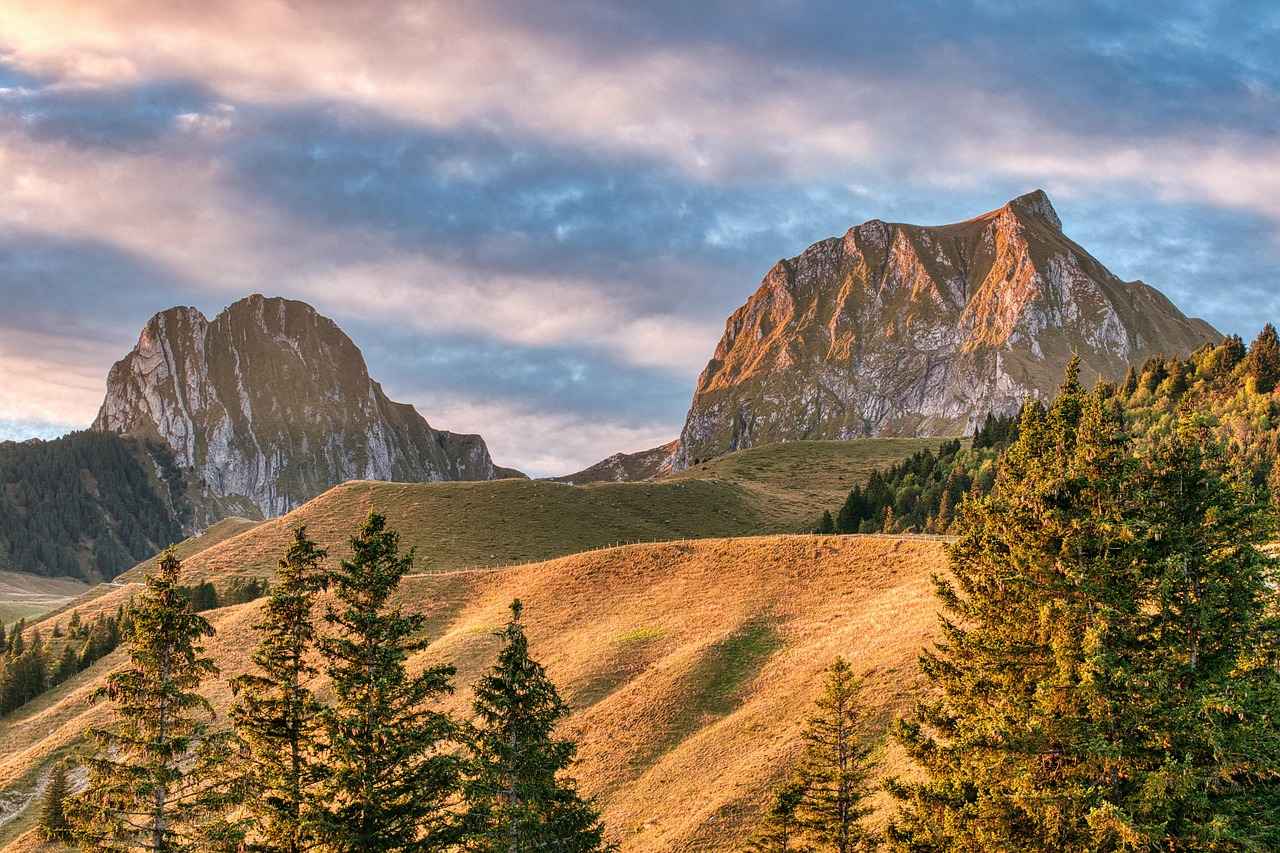
Cultural Experiences in Darjeeling
Darjeeling, nestled in the foothills of the Himalayas, is a melting pot of diverse cultures and traditions. This rich cultural tapestry is influenced by various communities, including the Lepchas, Bhutias, and Nepalis, each contributing their unique customs and practices. Visitors to this enchanting hill station can immerse themselves in a variety of local festivals, traditions, and experiences that showcase the vibrant heritage of the region.
Festivals Celebrated in Darjeeling
- Dussehra: This important Hindu festival signifies the victory of good over evil. The celebrations in Darjeeling are marked by grand processions, traditional music, and dance performances, creating a festive atmosphere.
- Tibetan New Year (Losar): Celebrated by the Tibetan community, Losar is a time of joy and festivity. Visitors can witness colorful parades, cultural dances, and delicious traditional foods during this time.
- Dashain: A significant festival for the Nepali community, Dashain involves family gatherings, prayers, and the exchange of blessings. The vibrant celebrations provide a glimpse into the local customs and traditions.
Local Traditions and Customs
In addition to festivals, Darjeeling’s cultural landscape is enriched by various traditions. The art of tea-making is a significant aspect of the local culture, with tea gardens playing a vital role in the economy and social fabric. Visitors can engage in tea-tasting sessions and learn about the intricate process of tea cultivation.
Experiential Opportunities
Travelers seeking authentic experiences can participate in local workshops, such as traditional handicraft making and cooking classes. These activities not only provide insight into the local lifestyle but also foster a deeper connection with the community.
Overall, the cultural experiences in Darjeeling offer visitors a unique opportunity to engage with the local way of life, creating lasting memories and enriching their travel journey.
Local Cuisine
Darjeeling’s culinary scene is a vibrant tapestry woven with the rich flavors of Tibetan, Nepali, and Bengali cuisines. This mountainous region is not just known for its breathtaking landscapes but also for its diverse gastronomic offerings that reflect the cultural amalgamation of its inhabitants. In this section, we will delve into some of the most popular dishes and dining spots that provide an authentic taste of Darjeeling.
One of the must-try dishes in Darjeeling is momos, which are steamed dumplings filled with vegetables or meat. These delightful snacks are often served with a spicy dipping sauce, making them a favorite among locals and tourists alike. Another popular dish is thukpa, a hearty noodle soup that warms the soul, especially during the chilly months. The combination of fresh vegetables, meat, and flavorful broth makes it a comforting meal.
For those with a sweet tooth, sel roti is a traditional Nepali rice-based doughnut that is crispy on the outside and soft on the inside. It is often enjoyed during festivals and special occasions, adding a touch of sweetness to the culinary experience.
| Dish | Description |
|---|---|
| Momos | Steamed dumplings filled with vegetables or meat. |
| Thukpa | A noodle soup with fresh vegetables and meat. |
| Sel Roti | A sweet, crispy rice-based doughnut. |
When it comes to dining spots, Glenary’s is a popular choice, offering a delightful mix of local and international dishes, along with stunning views of the mountains. For a more local experience, Kunga Restaurant serves some of the best thukpa and momos in town, frequented by both locals and visitors.
In conclusion, exploring the local cuisine of Darjeeling is an essential part of the travel experience. The unique blend of flavors and the warmth of the local dining establishments provide a true taste of the region’s culture and hospitality. So, when you visit Darjeeling, make sure to indulge in these culinary delights for an unforgettable gastronomic journey.
Festivals and Celebrations
Darjeeling, nestled in the Himalayas, is not only famous for its breathtaking landscapes but also for its vibrant festivals that showcase the rich cultural heritage of the region. These celebrations reflect the diverse traditions of the local communities, including Nepali, Tibetan, and Bengali influences. Here, we explore some of the major festivals celebrated in Darjeeling, their significance, and how visitors can immerse themselves in these local festivities.
- Dussehra: This Hindu festival symbolizes the victory of good over evil. In Darjeeling, it is celebrated with great fervor, featuring vibrant processions and cultural performances. Visitors can witness the local community coming together to participate in rituals and enjoy traditional food.
- Tihar: Also known as the festival of lights, Tihar is celebrated by the Nepali community in Darjeeling. Each day of the festival honors different animals and culminates with the worship of siblings. Tourists can engage in the festivities by joining in the dances and enjoying the colorful decorations.
- Losar: This Tibetan New Year is a significant festival celebrated with traditional music, dance, and feasting. The festivities include rituals at monasteries, making it a great opportunity for visitors to experience the spiritual aspect of Tibetan culture.
- Darjeeling Carnival: This annual event showcases the cultural diversity of the region through music, dance, and food. It attracts both locals and tourists, providing a platform for artists to perform. Visitors can participate in workshops and enjoy local delicacies.
Participating in these festivals not only offers a glimpse into the local culture but also fosters a sense of community and connection. Visitors are encouraged to engage with locals, try traditional foods, and partake in the various activities organized during these celebrations. By doing so, they can create unforgettable memories while appreciating the rich cultural tapestry of Darjeeling.
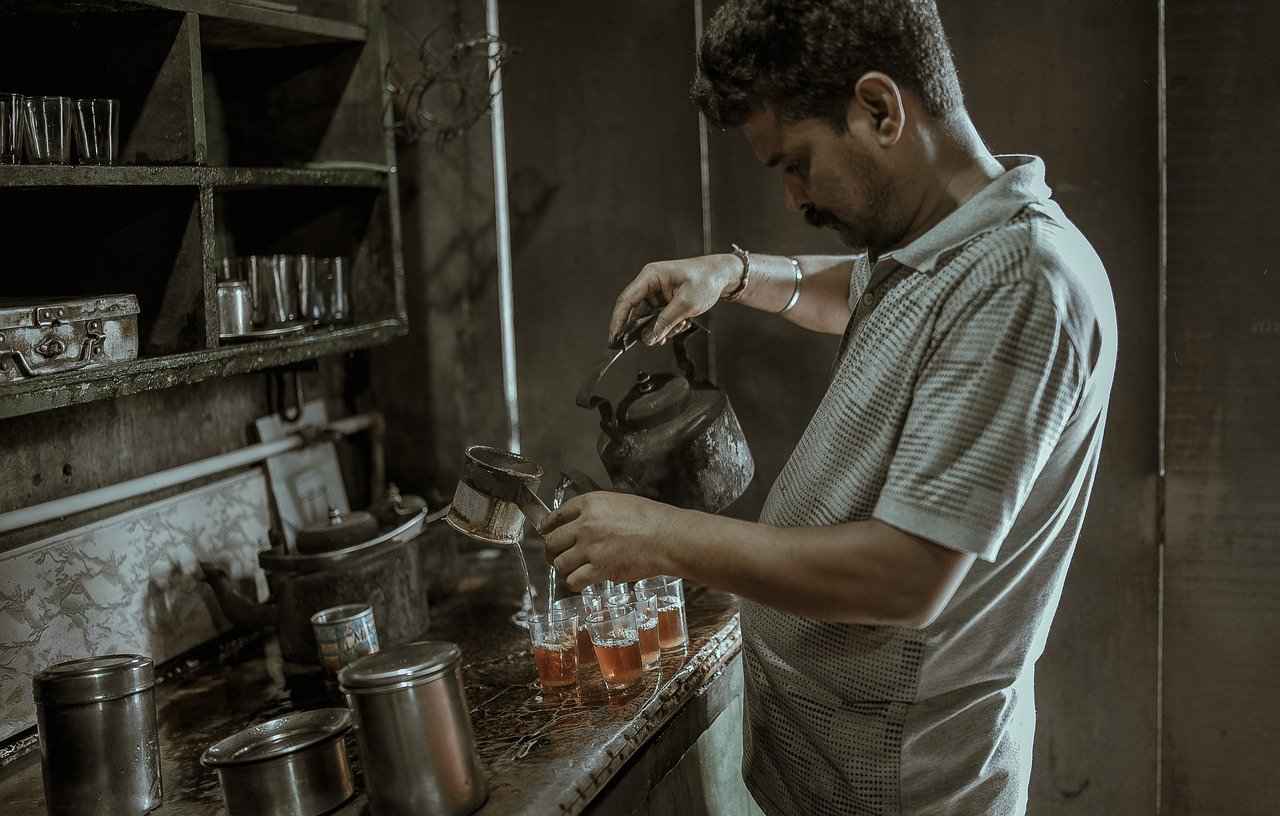
Practical Tips for Travelers
Navigating the enchanting hill station of Darjeeling requires some planning to ensure a smooth and enjoyable visit. This section offers essential travel tips covering transportation options, accommodation, and safety advice, helping you make the most of your time in this picturesque destination.
Transportation Options
Getting to and around Darjeeling can be an adventure in itself. Here are the primary transportation methods:
- By Air: The nearest airport is Bagdogra, located about 95 kilometers from Darjeeling. Regular flights connect Bagdogra with major Indian cities.
- By Train: The closest railway station is New Jalpaiguri, approximately 88 kilometers away. From there, you can hire a taxi or take a shared jeep to reach Darjeeling.
- By Road: Darjeeling is well-connected by road, and several private and government buses operate from nearby towns. The drive offers stunning views, so be sure to enjoy the scenery!
Accommodation Choices
Darjeeling boasts a variety of accommodation options to suit every budget:
- Luxury Hotels: For a lavish stay, consider options like the Windamere Hotel or The Glenburn Tea Estate.
- Mid-Range: Travelers looking for comfort without breaking the bank can opt for hotels such as Hotel Shangri-La or Hotel Hilltop.
- Budget Guesthouses: For those on a tighter budget, there are numerous guesthouses and homestays that offer a cozy atmosphere and local charm.
Safety Tips
While Darjeeling is generally safe for tourists, it’s wise to keep these safety tips in mind:
- Stay Hydrated: The altitude can be challenging, so drink plenty of water to stay hydrated.
- Be Cautious on Trails: If you plan to trek, ensure you have proper gear and inform someone about your route.
- Respect Local Customs: Familiarize yourself with local traditions and customs to ensure a respectful and enjoyable experience.
By following these practical tips, you can navigate Darjeeling with ease and immerse yourself in its breathtaking beauty and rich culture. Enjoy your adventure in the Queen of Hills!
Getting to Darjeeling
is an essential part of planning your visit to this enchanting hill station. Located in the northern part of West Bengal, Darjeeling is accessible through various modes of transportation. This section will guide you through the best ways to reach Darjeeling from major cities and nearby airports.
To begin with, the nearest major airport is Bagdogra Airport, situated approximately 70 kilometers from Darjeeling. It serves as the primary gateway for travelers coming from other states and international destinations. Upon arrival at Bagdogra, you can opt for several transportation options:
- Taxi Services: Taxis are readily available at the airport, providing a comfortable and direct route to Darjeeling. The journey takes about 2.5 to 3 hours, and you can enjoy scenic views along the way.
- Shared Jeep: For budget-conscious travelers, shared jeeps offer an economical way to reach Darjeeling. These jeeps leave when full and take approximately the same time as taxis.
If you’re traveling from Kolkata, there are several options to consider:
- By Train: You can take a train from Kolkata to NJP (New Jalpaiguri Railway Station), which is the closest major railway station to Darjeeling. From NJP, taxis and shared jeeps are available to complete the remaining journey.
- By Bus: Long-distance buses also operate from Kolkata to Siliguri, where you can transfer to a taxi or jeep to reach Darjeeling.
For those already in the region, Siliguri serves as a convenient hub. You can easily find taxis and buses that connect Siliguri to Darjeeling, making your travel seamless.
In summary, reaching Darjeeling is straightforward with various transportation options available, catering to different budgets and preferences. Whether you choose to fly, take a train, or travel by road, the journey to this picturesque hill station is sure to be filled with breathtaking views and memorable experiences.
Accommodation Options
Accommodation Options in Darjeeling
When planning your visit to Darjeeling, you’ll discover a diverse range of that cater to every type of traveler. From opulent hotels with breathtaking views to charming budget guesthouses, the choices are plentiful. This section aims to guide you in selecting the best places to stay based on your personal preferences and budget.
| Type of Accommodation | Features | Price Range (per night) |
|---|---|---|
| Luxury Hotels | Stunning views, fine dining, spa services | ₹8000 – ₹15000 |
| Mid-Range Hotels | Comfortable rooms, local cuisine, good locations | ₹3000 – ₹8000 |
| Budget Guesthouses | Basic amenities, homely atmosphere, local experiences | ₹800 – ₹3000 |
- Luxury Hotels: If you seek a lavish experience, consider staying at renowned establishments like Windamere Hotel or Mayfair Darjeeling. These hotels offer exceptional hospitality and panoramic views of the Himalayas.
- Mid-Range Hotels: For a balance of comfort and affordability, options like Hotel Dreamland and Hotel Mohit provide cozy accommodations with easy access to local attractions.
- Budget Guesthouses: If you’re traveling on a tight budget, guesthouses such as Hotel Sunrise and Hotel Hilltop offer a warm atmosphere and are perfect for backpackers or solo travelers.
Regardless of your choice, it’s advisable to book your accommodation in advance, especially during the peak tourist season. This ensures you secure the best options that align with your travel plans. With a variety of places to stay, you’re sure to find the perfect home base for your adventures in this breathtaking hill station.
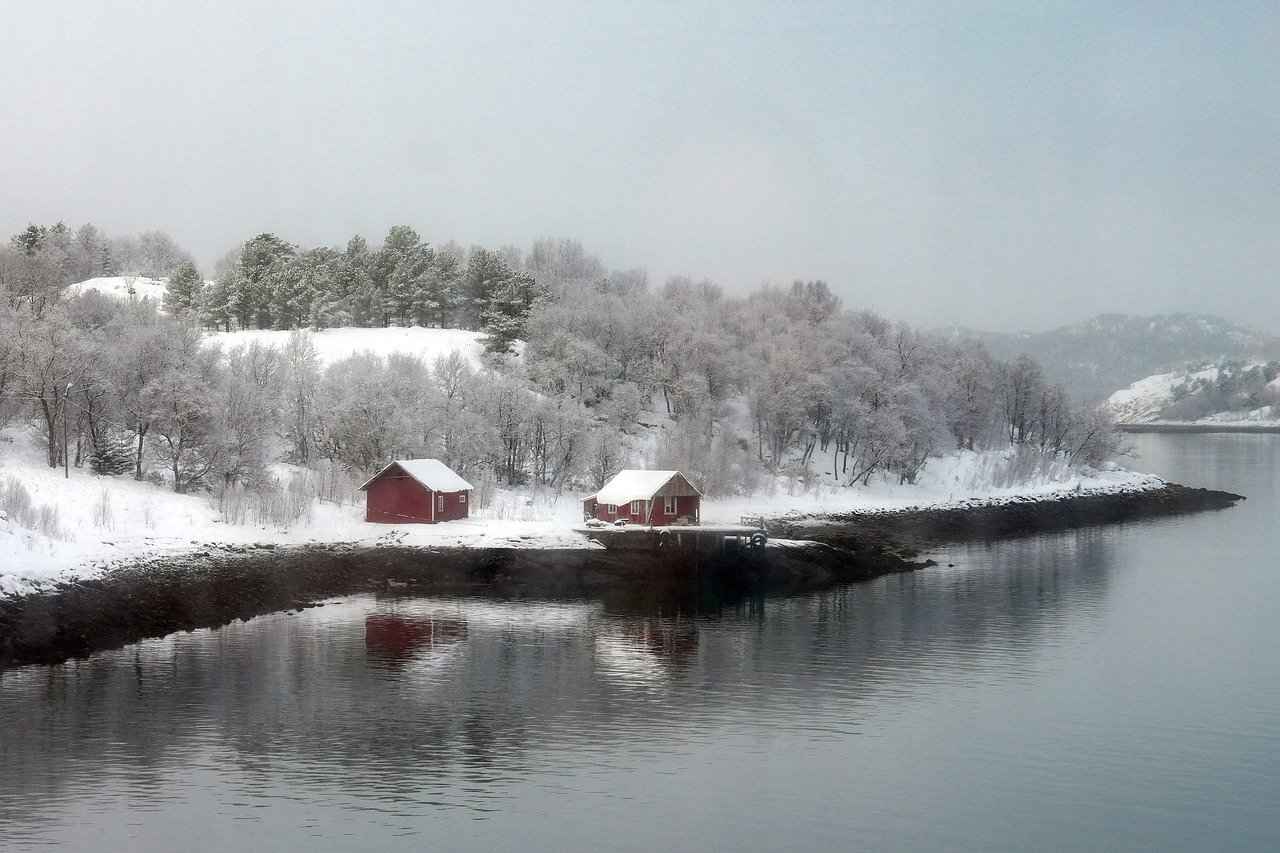
Conclusion: Embrace the Beauty of Darjeeling
Darjeeling, fondly referred to as the Queen of Hills, is not just a destination; it is an experience that captivates the hearts of all who visit. Nestled in the lap of the Himalayas, this enchanting hill station is known for its breathtaking landscapes, rich cultural heritage, and thrilling adventures. As you wander through its lush tea gardens and vibrant markets, you will discover a unique blend of natural beauty and cultural richness that makes Darjeeling truly special.
The town is renowned for its stunning vistas, particularly the majestic Mount Kanchenjunga, which stands tall as a testament to nature’s grandeur. Visitors can embark on exhilarating treks, enjoy the famous toy train rides of the Darjeeling Himalayan Railway, or simply relax in the serene ambiance of the tea estates. The local cuisine, influenced by Tibetan, Nepali, and Bengali flavors, adds a culinary dimension that is not to be missed.
Moreover, Darjeeling is a cultural mosaic, with festivals and traditions that reflect the vibrant lifestyle of its people. Engaging with the locals during these celebrations provides a deeper understanding of their customs and practices, enriching your travel experience.
As you plan your visit, consider the best times to explore the region, whether it’s the pleasant summer months or the enchanting winter season. Each period offers its own unique charm, making every visit to Darjeeling memorable.
In conclusion, Darjeeling is more than just a destination; it is a magical escape that invites travelers to immerse themselves in its beauty and culture. Whether you are seeking adventure, relaxation, or a taste of local life, this hill station has something for everyone. So pack your bags and get ready to embrace the magic of Darjeeling!
Frequently Asked Questions
- What is the best time to visit Darjeeling?
The best time to visit Darjeeling is during the summer months from March to June. The weather is pleasant, making it ideal for sightseeing and outdoor activities. However, if you enjoy winter sports or the beauty of snow, visiting between December and February could be magical!
- How can I get to Darjeeling?
You can reach Darjeeling by various means. The nearest airport is Bagdogra, from where you can take a taxi or a shared vehicle. Alternatively, you can also travel by train to New Jalpaiguri and then hire a cab. The scenic toy train ride from New Jalpaiguri to Darjeeling is a must-experience!
- What are the must-visit attractions in Darjeeling?
Some of the must-visit attractions include the Darjeeling Himalayan Railway, the stunning tea gardens, and breathtaking views of Mount Kanchenjunga. Don’t miss out on visiting the local monasteries and enjoying the vibrant local markets!
- Is it safe to travel to Darjeeling?
Yes, Darjeeling is generally safe for tourists. However, it’s always wise to stay updated on local conditions, especially during the monsoon season when landslides can occur. Always follow travel advisories and take necessary precautions.
- What local dishes should I try in Darjeeling?
Don’t miss out on trying local delicacies like momos, thukpa, and the famous Darjeeling tea! The blend of Tibetan, Nepali, and Bengali cuisines offers a delightful gastronomic experience that you won’t forget!
























































